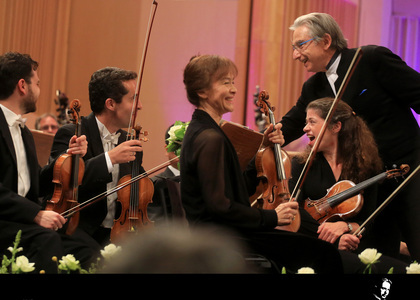> [Archived] Chronicles

The San Francisco Symphony - Technical Excellence and a Bold Vision upon the Repertoire
It is also true that Absolute Jest, a virtuosic, well-sustained opus, a real instrumental 'tour de force' for the performers, does not count on emotion, but it has a brilliant, minimalistic construction, based primarily on the rhythmical, pulsating aspect. The melodic structure is based upon motifs and its development is based on a repetitiveness that eventually reveals the big picture of a sonorous puzzle in which what can you hear at a certain moment is closely related to what you could hear before, but also significantly different. In other words, an attractive, imaginative language, but not very easily assimilated by an audience that is unfamiliar with the contemporary sonorities. This opus, however, represents its precious contact with a major musical style that appeared in the late twentieth century.
'I hope they will make up for this work in the second part of the programme' - grumbled an elegantly dressed gentleman during the break. And the musicians did it, but in their own clear and accurate style, paying attention to details and faithfully following the elegant indications of Michael Tilson Thomas, thus rendering the famous Symphony No. 3 'Eroica' by Beethoven very neatly and almost flawlessly from a technical point of view, with the exception of some slight delays during the last movement. Moreover, the 'heroic' character of the symphony was not fully rendered, as Michael Tilson Thomas focused on emphasizing certain refined, agogic and dynamic details that are not usually highlighted when this work is being performed. However, he undoubtedly took responsibility for his choice . Some people might complain about the the San Francisco Symphony's objectivity, their certain lack of expressiveness, which ultimately leads to a lack of personal touch - even if their performances are almost flawless. But the members of the orchestra and especially Michael Tilson Thomas took responsibility for their choice. The certain fact is that last evening we had the extremely rare opportunityof watching an elite ensemble that is ranked within America's top five. The ensembles across the ocean have seldom come to perform here along this festival's history. This performance certainly was an event, regardless of people's opinions. The San Francisco Symphony proved that music in North America is made with a technical excellence and a bold vision upon the repertoire.
Translated by Iorga Elena Alexandra and Ioana Săbău
MTTLC, the University of Bucharest














